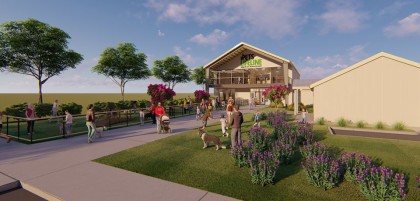
By Kira Catanzaro
Since 1982, Pets Lifeline has heroically served as Sonoma Valley’s only animal shelter, rehabilitating and finding homes for stray or abandoned cats and dogs (19,000 and counting). The nonprofit, no-kill organization has been operating in an outdated, overgrown, inefficient and unsustainable facility; it is a hodgepodge of sheds, a trailer, and chain link kennels set beside the original shelter built in 1987.
Now and at last, upgrades and expansion are on the drawing board.
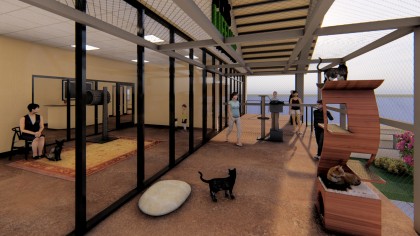
With zoning issues settled, Pets Lifeline has the go-ahead to build its new $3.4 million Animal Resource Center. It has already raised $2.1 million, which includes a $500,000 grant from the Alex & Elisabeth Lewyt Charitable Trust. The Lewyts were instrumental in making Long Island’s North Shore Animal League the world’s largest no-kill animal shelter.
“It makes a lot of difference to our donors to know we have that kind of support,” said Executive Director and CEO, Nancy King.
The nonprofit hopes to raise the last $1.3 million needed to break ground this summer by launching a three-month media-saturating campaign now. Images of cats and dogs, big eyes begging for your help from beneath the brim of PLL hard hats, will meet you at every turn.
It will be hard to resist their sweet and fuzzy faces inviting you to join fund-raising efforts, so just give in and be a part of their paws. Sorry. Cause.
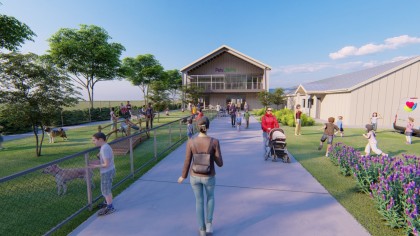
The new facility increases capacity from 13 dogs and 52 cats to 20 dogs and 75 cats, and the planned building more than doubles the current 5,000 square-foot pawprint.
King and her team enlisted shelter architect George Miers to conduct a needs assessment a consultant from the UC Davis School of Shelter Medicine to determine the best practices for kennel habitats. Santa Rosa architect Harry Wix then drafted a new campus for Pets Lifeline incorporating what they learned. The plans are exciting to see and are available on the PLL website. Tours of the existing facility, followed by a presentation of the new plans, are available to potential donors.
The beautiful shelter will feature a two-story building attached to the original structure, remodeled. But, it is more than a pretty face. It is smart and environmentally friendly. Solar panels will produce 75 percent of the electricity needed to support the facility. A non-polluting propane generator will be on hand for emergencies. A rainwater harvesting system will collect an emergency water supply. And, through Sonoma’s first “vermiculture” system, kennel waste will be processed through four levels of microbial bacteria, becoming worm food, compost and eventually filtered water for landscaping and shelter use.
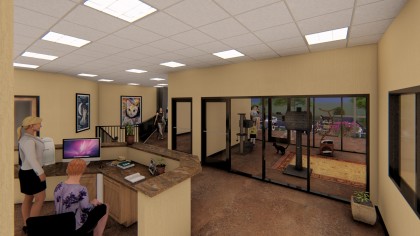
From a parking lot at the front of the property, visitors will take a walkway through the drought-resistant landscape: a remembrance garden, a small dog recreation area, and another area for larger friends. Donor tiles (part of ongoing giving) will line that walk.
A greatly expanded, light-filled reception area has been designed with one registration desk specifically for dogs, and another, upstairs, for cats. These areas will also serve as galleries for canine and feline art.
“The design includes a clearly designated front of house and back of house,” said King. “This helps in reducing disease. Stray animal intake will be at the back of house, where they will be examined and spayed or neutered. Adoptable animals will be in indoor/outdoor spaces in the front.” These measures improve the animals’ chances of a stress-free, speedy recovery and permanent placement in a (as charmingly stated on the PL website) “furever home.”
“The habitats are key. The animals are our priority,” said King. The new facility’s designs and systems meet gold standards, ensuring Pets Lifeline will be able to provide the best possible care for the animals they rescue and for the humans that love them.
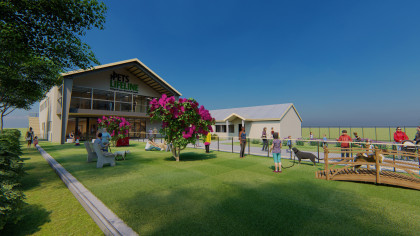
The indoor/outdoor habitats incorporate a high pressure washing system that will save Pets Lifeline time, water and labor costs, and will provide the animals with sanitary and stress-free quarters.
You think it’s hard to herd cats? Try being a cat herded daily from cage to crate.
The feline population will be quite pleased with their new digs. Eight community cat rooms and a “catio” overlooking the dog grounds will provide plenty of space for cats of varying ages, and temperament, to do their thing in peace. The tomcats won’t have to suffer the pretensions of soft house cats, and come the season, the kittens will be able to romp safely with their friends.
Downstairs, there will be a 1,375 square foot clinic with rooms for intake, isolation, exams and surgery as well as a dividable multi-purpose room for on-site programs like training and humane education classes. As it is now, summer camp and dog training take place outside, weather permitting. This multi-purpose space can also serve as emergency shelter for 75 people and their pets, should another disaster occur.






Be First to Comment